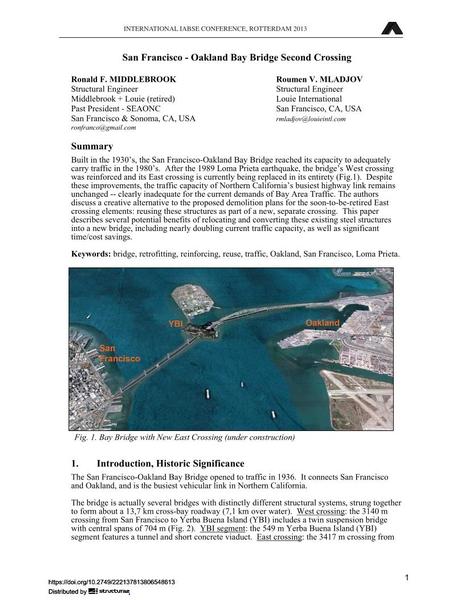San Francisco - Oakland Bay Bridge Second Crossing

|
|
|||||||||||
Détails bibliographiques
| Auteur(s): |
Ronald F. Middlebrook
Roumen V. Mladjov |
||||
|---|---|---|---|---|---|
| Médium: | papier de conférence | ||||
| Langue(s): | anglais | ||||
| Conférence: | IABSE Conference: Assessment, Upgrading and Refurbishment of Infrastructures, Rotterdam, The Netherlands, 6-8 May 2013 | ||||
| Publié dans: | IABSE Conference, Rotterdam, May 2013 | ||||
|
|||||
| Page(s): | 618-619 | ||||
| Nombre total de pages (du PDF): | 8 | ||||
| Année: | 2013 | ||||
| DOI: | 10.2749/222137813806548613 | ||||
| Abstrait: |
Built in the 1930’s, the San Francisco-Oakland Bay Bridge reached its capacity to adequately carry traffic in the 1980’s. After the 1989 Loma Prieta earthquake, the bridge’s West crossing was reinforced and its East crossing is currently being replaced in its entirety (Fig.1). Despite these improvements, the traffic capacity of Northern California’s busiest highway link remains unchanged -- clearly inadequate for the current demands of Bay Area Traffic. The authors discuss a creative alternative to the proposed demolition plans for the soon-to-be-retired East crossing elements: reusing these structures as part of a new, separate crossing. This paper describes several potential benefits of relocating and converting these existing steel structures into a new bridge, including nearly doubling current traffic capacity, as well as significant time/cost savings. |
||||
| Mots-clé: |
pont ferraillage
|
||||
